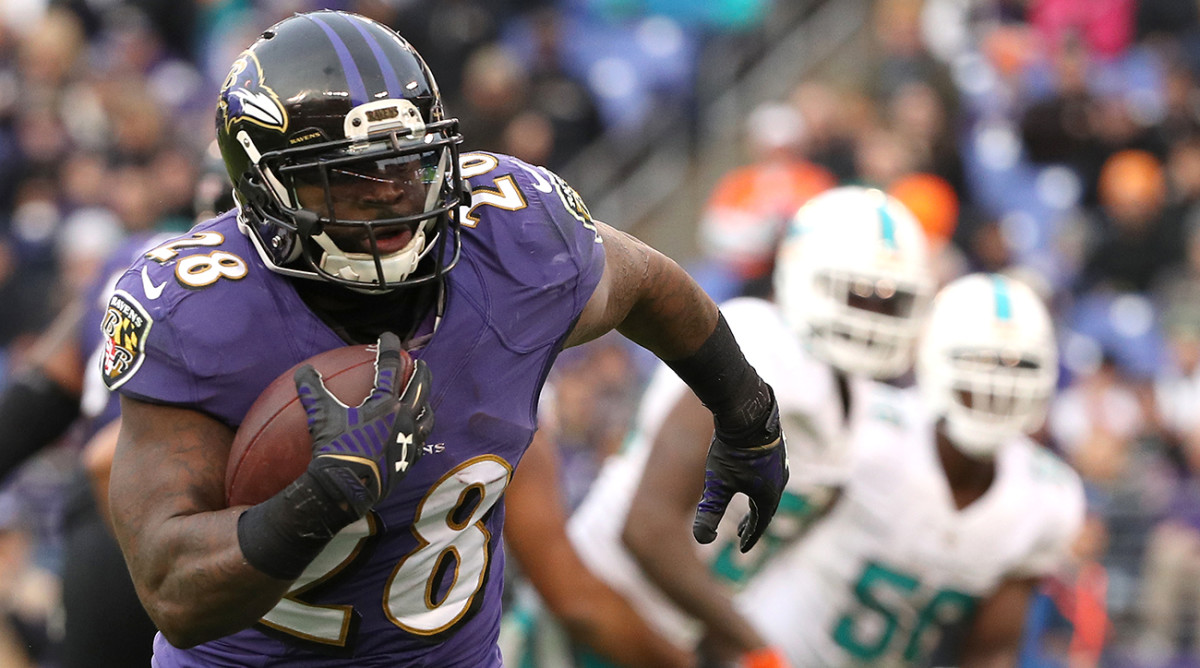Baltimore Ravens: 10 Things You Need to Know

1. Joe Flacco must be more consistent than he was a year ago. His rifle arm will yield a handful of Wow! throws each week, and some of those throws will result in big plays. But the Ravens learned last season that they can’t subsist only on this. They aspire to be a quick-strike passing offense. Flacco must rediscover his disciplined mechanics and decision-making. There were simply too many incomplete passes, unrecognized open receivers and inexcusable interceptions in 2016.
2. The question is whether the Ravens should even want to be a quick-strike passing offense. They’re at their best when the running game is their top focus. Run-based offenses tend to feature more five-step timing passes, where intermediate levels can be attacked through play-action. Last season the Ravens led the league in passing attempts but ranked 26th in yards per dropback. They were 30th in rushing attempts. That must change. They have the personnel to be run-first, even without Kenneth Dixon (out for the year with a torn meniscus), an excellent zone runner. Terrance West is less disciplined but capable of making defenders miss early in the down. Danny Woodhead is here as a passing-down weapon (he can align anywhere as a receiver, plus he’s great on checkdowns), but he is also capable of running out of three-receiver sets, which fits Baltimore’s zone ground game.

3. Defenses must force Flacco to read their coverage after the snap. He’s too good at exploiting predictable zone looks. It’s imperative that a defense disguise and diversify against him.
4. Assuming Flacco plays better, the receiving corps will make or break this offense. Newcomer Jeremy Maclin replaces Steve Smith Sr. as the No. 1. That’s a wash. Maclin is polished but, in and of himself, not a significant difference-maker. His production comes mainly from within the flow of the scheme. Breshad Perriman has the size and raw talent to be a difference-maker, which is why he’ll likely play on the weak side in most of Baltimore’s formations. But it’s time for Perriman to blossom. He never established a clear week-to-week role last season, and head coach John Harbaugh has even said publicly they need the 2015 first-rounder’s development process to accelerate. How Maclin and Perriman perform will dictate how Mike Wallace performs. Great on go and drag routes but little else, Wallace is a highly schemed puzzle piece.
5. Something Baltimore does that few other offenses do: align in 4x1 sets. That is, four receivers to one side, one receiver to the other (Flacco is the only player in the backfield). They love this in the far red zone (15- to 20-yard-line area) but could do it all over the field more often in 2017. Defenses must have a plan for this unusual formation. The Patriots and Steelers both brought zone blitzes against it, often with a defensive back rushing.
6. Ex-Cardinals safety Tony Jefferson was a great free agent pickup. Defensive coordinator Dean Pees played a lot of zone coverage last season. Jefferson, because he can match up to tight ends anywhere on the field, should incentivize Pees to play more man-to-man. That will only augment the expansive blitz packages that Pees loves. (Double-A-gap pressure looks will be a big factor.) Jefferson himself is an adroit blitzer. He’ll add dimension to Baltimore’s presnap disguises, especially given that he’s paired with one of the game’s best presnap disguise artists, Eric Weddle.
7. Speaking of Weddle, with Jefferson aboard and corner-turned-safety Lardarius Webb back after an excellent 2016 campaign, the longtime Charger will have more snaps as a free defender in 2017. That plays perfectly to his strengths and hides some of the subtle weaknesses in matchup coverage that 32 years of age have brought about.
8. For the first three-fourths of last season, Baltimore’s was far and away the best run defense in football. (It wore down after Week 13.) Tackles Brandon Williams and Michael Pierce were the main reasons why. Both can anchor against double-teams, and Williams has shockingly strong movement abilities for a rotund 340-pounder. These two really shined in the first- and second-down nickel package, eliminating offenses’ ability to run the ball out of three-receiver sets.
9. Terrell Suggs is a Hall of Famer. At 34, he’s lost some weight and very little of his game. He doesn’t just rush the passer. His edge-setting and ball-chasing in run defense are superb. And, in a way, so is his coverage. There isn’t a stat for this, but something Suggs does extremely well is jam tight ends who are coming off the line of scrimmage. That compromises an offense’s spacing and timing, and it aids the zone defenders behind Suggs. Lastly, teams are reluctant to run read-option against the Ravens because, dating back to the Super Bowl win over San Francisco, Suggs has shown an eagerness to drill the snot out of the quarterback regardless if he keeps the ball or not.
10. The only real concern with this defense is a lack of options at inside linebacker. With Zach Orr gone, it’s on 2016 second-rounder Kamalei Correa to step up. Correa, more of an edge player by trade, was a healthy scratch for three games last season and confined mostly to special teams. Don’t be surprised if the Ravens play big nickel (i.e. three safeties) every down and dime (one linebacker, six defensive backs) on passing downs.
• Question or comment? Email us at talkback@themmqb.com.
